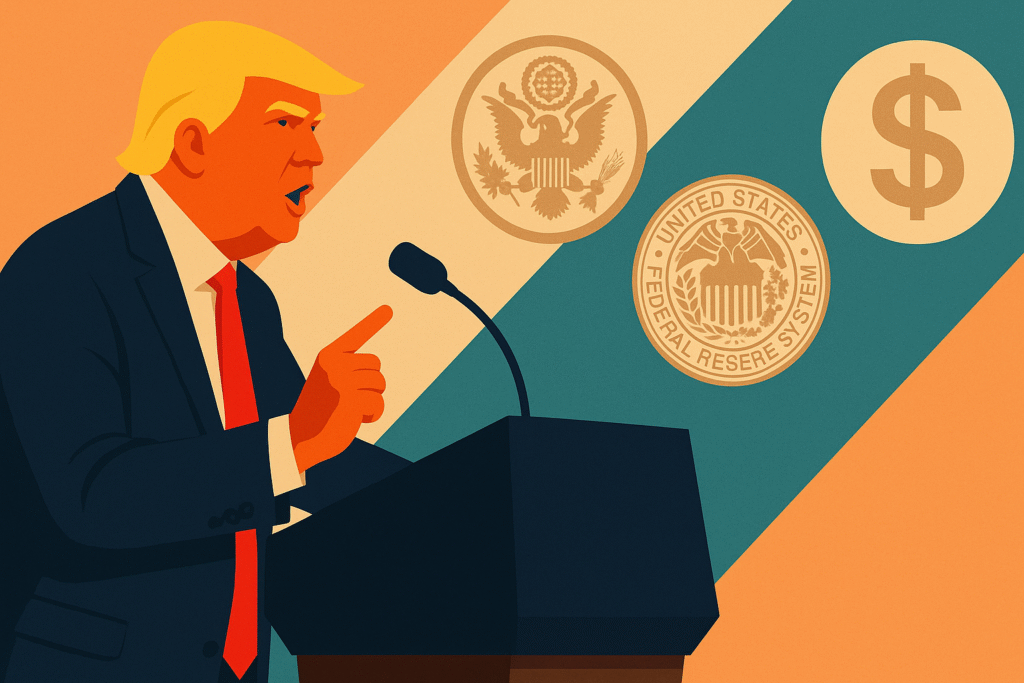In a pivotal week for U.S. economic governance, President Donald Trump has signaled major shifts in leadership at key financial institutions, while simultaneously intensifying trade actions. His recent decisions are poised to reshape not only the Federal Reserve but also the way economic data is managed and perceived across the country.
Federal Reserve and BLS in Focus
Trump announced his intention to fill a vacant seat on the Federal Reserve Board and appoint a new head of the Bureau of Labor Statistics (BLS), just days after firing former BLS commissioner Erika McEntarfer. Her dismissal came in the wake of a weak July jobs report, which Trump claimed — without evidence — had been manipulated. The move has sparked concerns over the politicization of economic data, which underpin global asset pricing and guide monetary policy.
According to White House economic adviser Kevin Hassett, the administration believes the BLS needs a “fresh pair of eyes” and has emphasized the need for “transparent and reliable” data. Trump reiterated his claim that the recent report was “rigged,” further suggesting a shift toward closer executive oversight of statistical agencies.
Fed Chair Successor in the Making
The sudden resignation of Fed Governor Adriana Kugler five months before the end of her term has given Trump a rare opportunity to install a potential successor to current Fed Chair Jay Powell ahead of the official transition in 2026. Trump is reportedly narrowing down his shortlist to four candidates. Leading contenders include:
- Kevin Hassett – Director of the White House National Economic Council
- Kevin Warsh – Former Fed official
- Christopher Waller – Current Fed Governor appointed by Trump during his first term
Trump has previously criticized Powell for maintaining high interest rates, calling him a “knucklehead” and blaming him for holding back economic growth. Analysts suggest that Trump may use the current vacancy as a “dress rehearsal” for a future Fed chair appointment, testing a candidate’s alignment with his economic vision before the full transition.
Tariffs and Trade Tensions Resurface
Beyond institutional changes, Trump is also reasserting his trade policy stance. He is preparing to announce substantial tariff increases on Indian imports, citing India’s continued purchases of Russian oil. Additionally, Mexico has returned to Trump’s crosshairs, particularly in the agricultural sector.
In a bid to revive Florida’s struggling tomato industry, Trump has imposed a 17% anti-dumping duty on Mexican tomato imports. U.S. growers, who have lost significant market share to Mexico since NAFTA, praised the move as critical for their survival. Mexican growers, however, deny any unfair pricing practices and attribute their dominance to superior investment, climate, and technology.
Global and Domestic Repercussions
The cumulative effect of these moves — from dismissing key officials to reshaping trade rules — is sparking concern among investors, economists, and global partners. Critics argue that tampering with economic data or turning institutions into political tools could undermine market trust and policy integrity.
As political watchers observe, Trump’s actions align with patterns seen in other countries where economic institutions have been politicized, including Turkey, Russia, and China. The consequences, experts warn, include weakened policymaking and damaged investor confidence.
Still, Trump appears undeterred. With a focus on bringing allies into key institutions and reshaping the narrative on trade and economic performance, the coming weeks are expected to be decisive in defining the administration’s economic trajectory — and its political ambitions.



